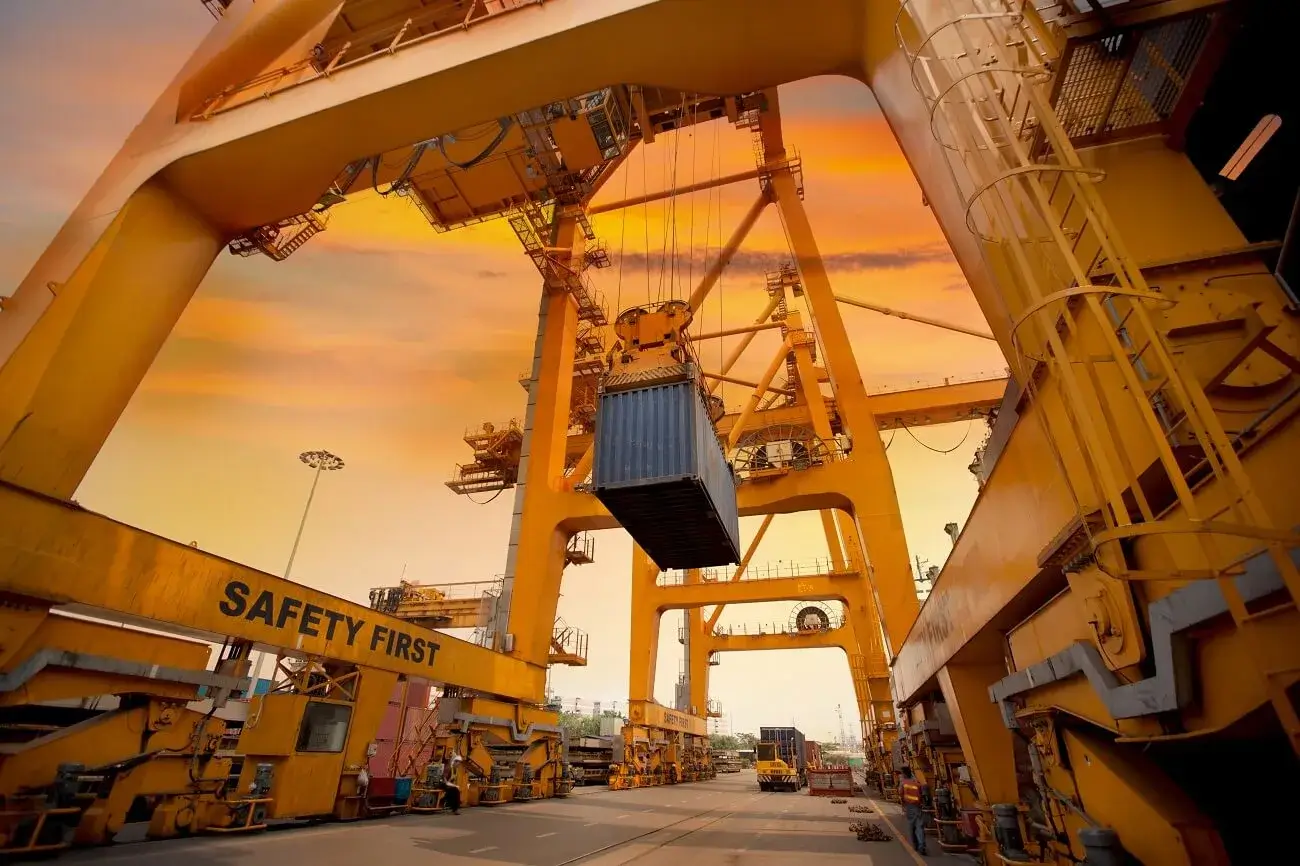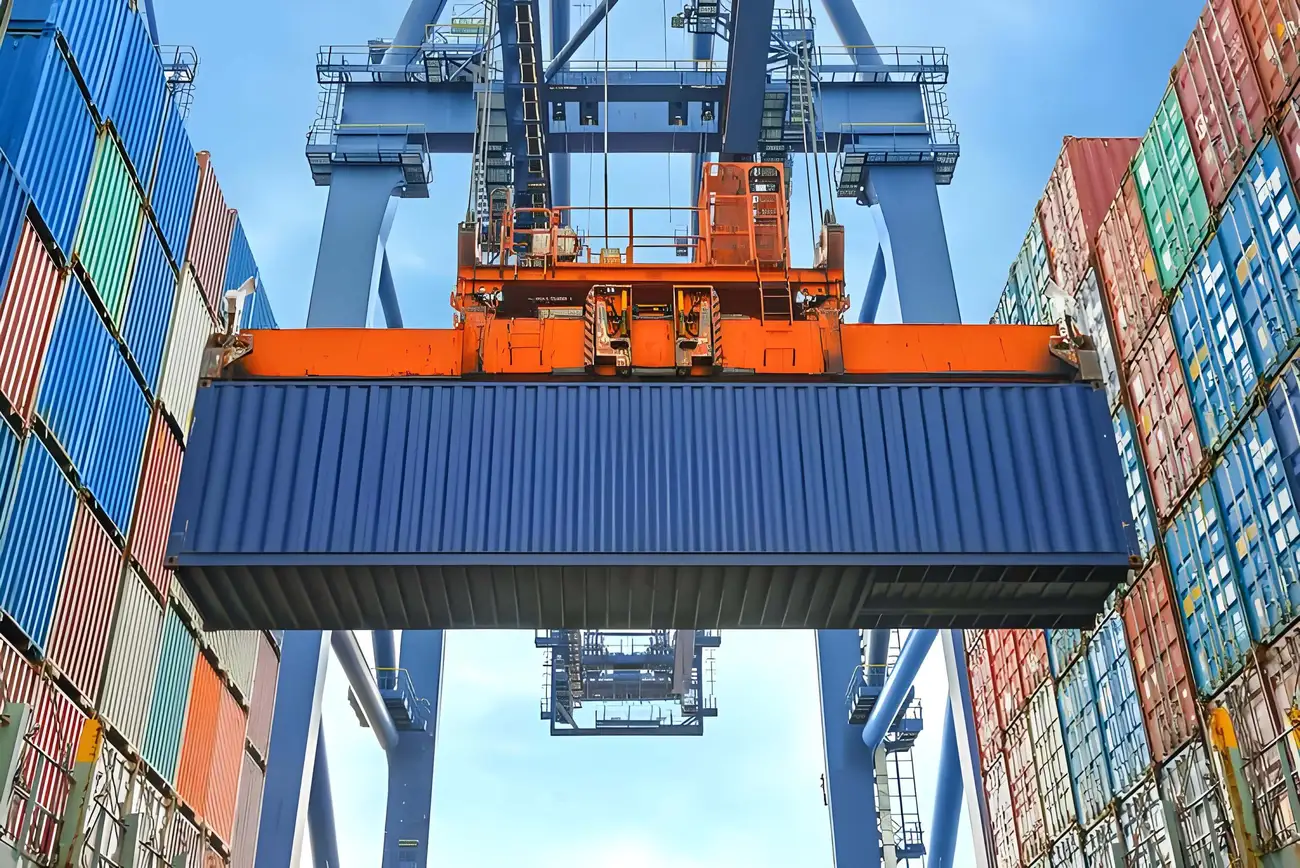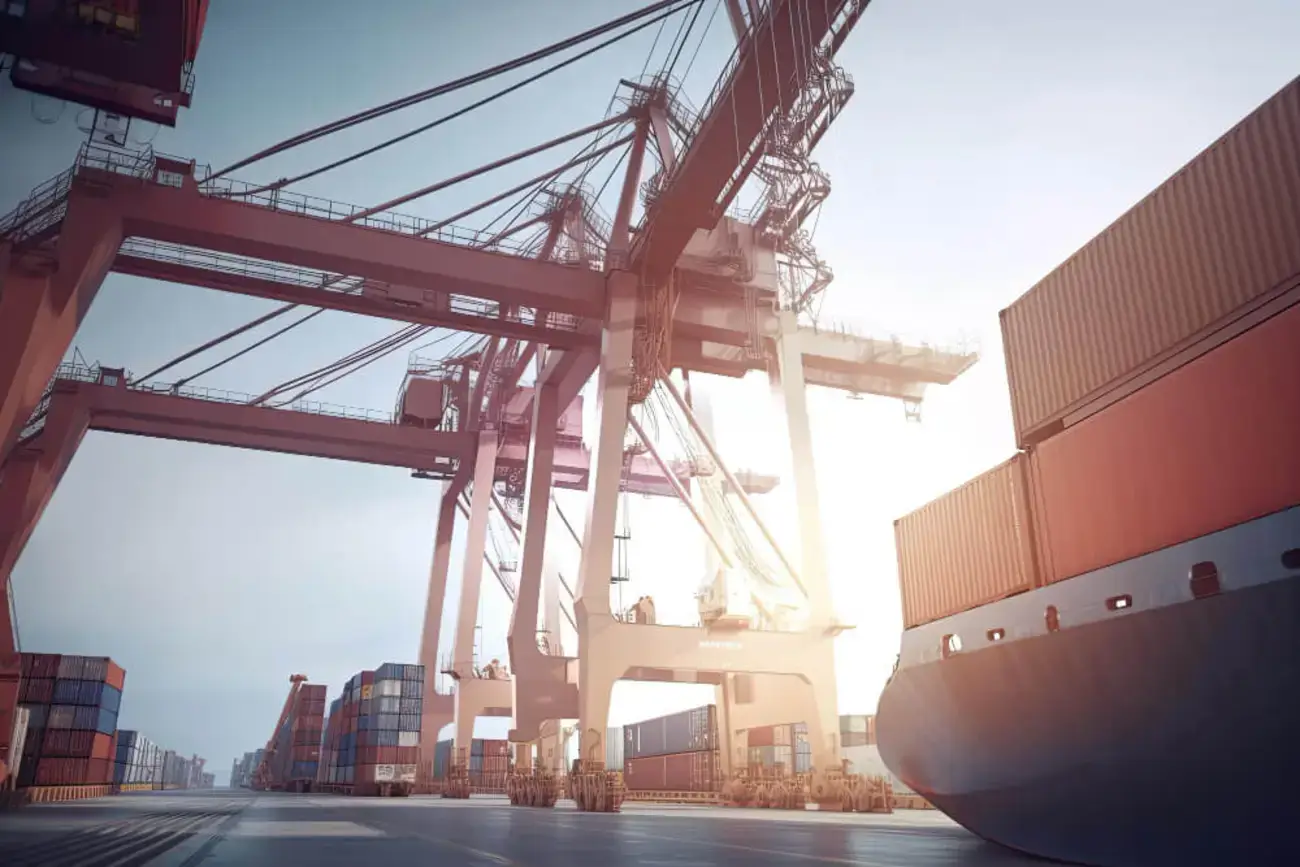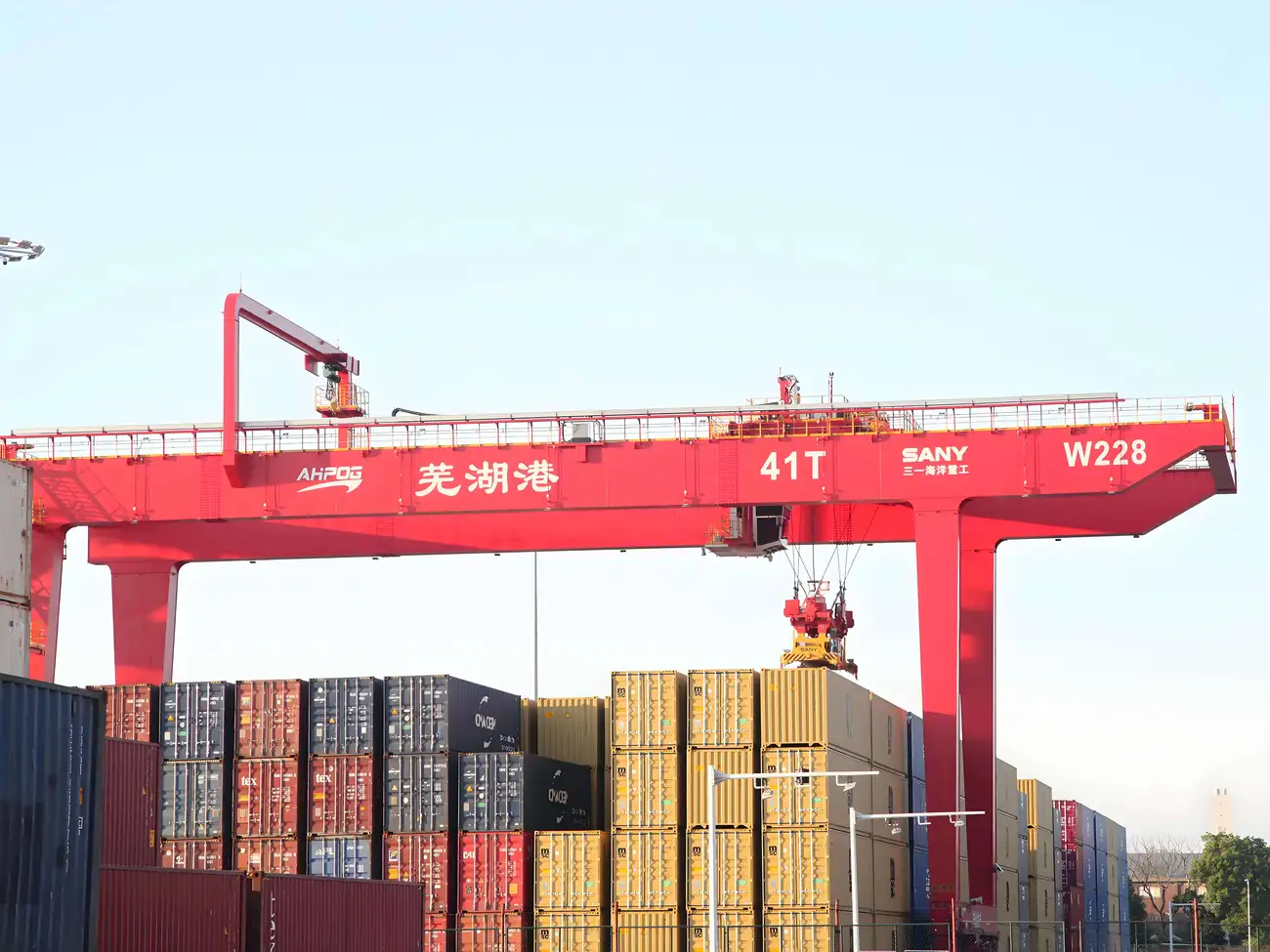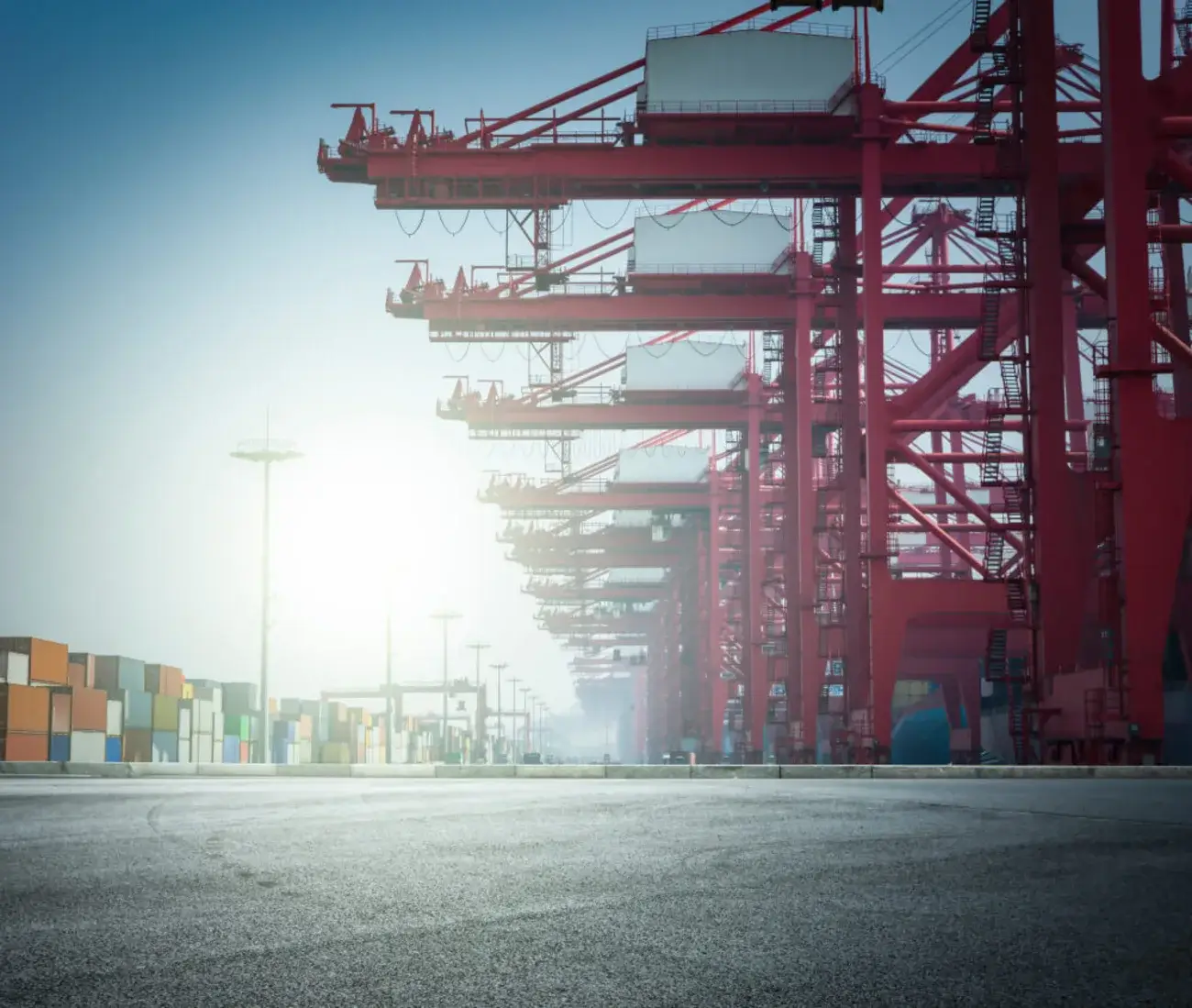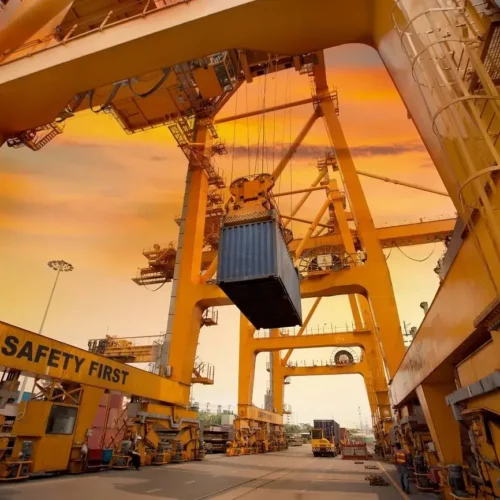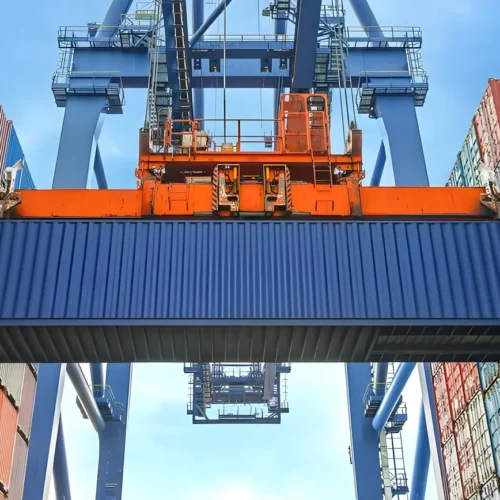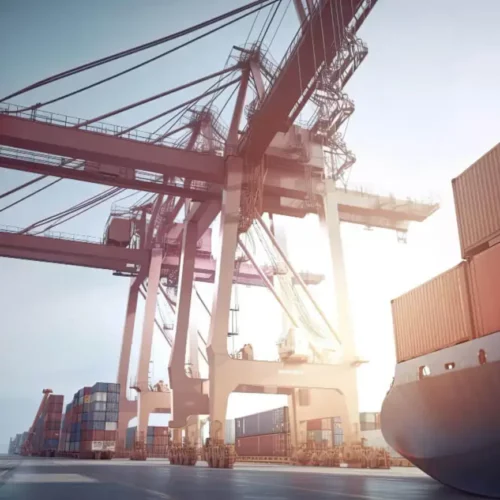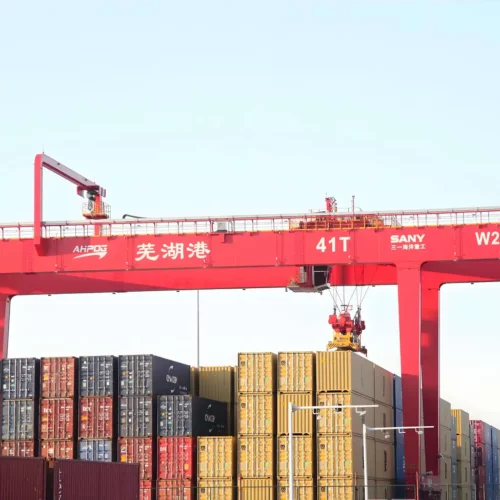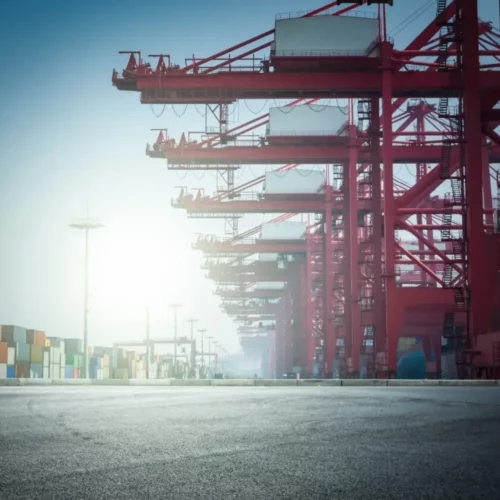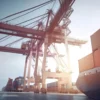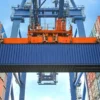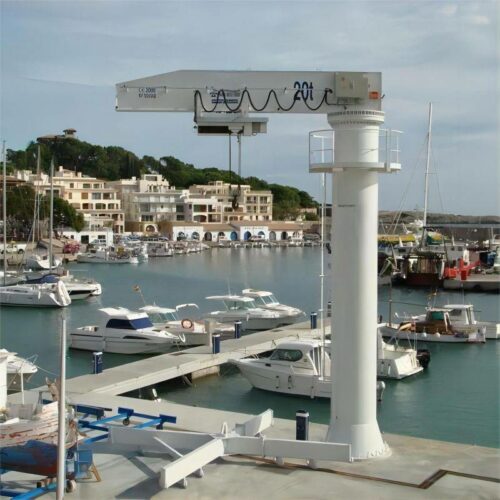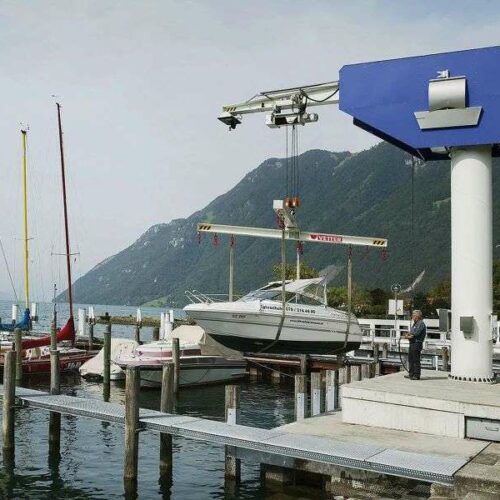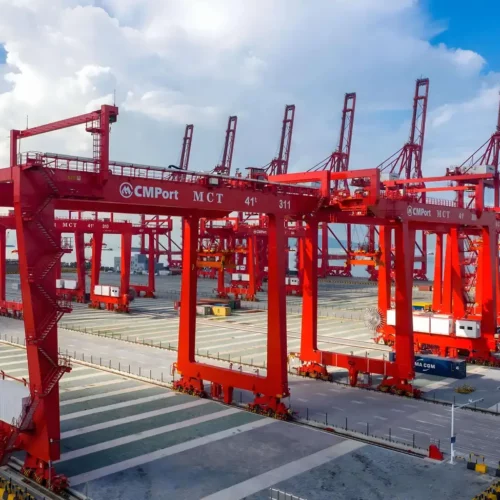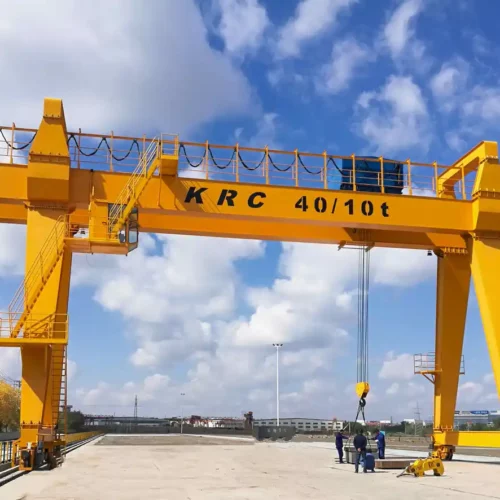container crane Safety Certifications
Container crane safety certifications are essential to ensure the safe operation and compliance of these heavy equipment units in port and terminal environments. Key certifications include:
1. ISO 9001:2015: This standard specifies requirements for a quality management system (QMS). Organizations use it to demonstrate their ability to consistently provide products and services that meet customer and regulatory standards.
2. ISO 45001:2018: Focuses on occupational health and safety (OH&S) management systems, providing a framework to improve safety, reduce workplace risks, and enhance health and well-being at work.
3. CE Marking: Indicates that the crane complies with European Union safety, health, and environmental protection standards. It is mandatory for cranes within the European Economic Area (EEA).
4. OSHA Compliance: The crane must meet standards set by the Occupational Safety and Health Administration (OSHA) in the United States, which regulates safety and health in the workplace.
5. EN 13852-1: European Norm for the design and construction of offshore cranes, which includes specific requirements for container cranes used in maritime environments.
6. ASME B30.2: American Society of Mechanical Engineers standard that covers the safety requirements for overhead and gantry cranes.
7. Lifting Equipment Engineers Association (LEEA) Certification: Ensures that the lifting equipment is safe and meets high standards for engineering and inspection.
These certifications provide robust guidelines ensuring that container cranes operate safely, efficiently, and in compliance with regulatory requirements. Adhering to these standards mitigates risks and ensures a safer working environment for operators and maintenance personnel.
List Reference Technical Parameters of “container crane”
A container crane, also known as a container handling gantry crane, is essential in ports for loading and unloading intermodal containers. Here are key reference technical parameters:
1. Lifting Capacity: Varies between 40 to 80 tons, allowing for the handling of standard 20-foot, 40-foot, and sometimes 45-foot containers.
2. Span: The distance between the crane’s legs can range from 15 to over 40 meters, tailored to fit multiple container rows.
3. Outreach: Extends from 30 to over 65 meters, enabling the crane to reach across several rows of containers and the width of large container ships.
4. Back Reach: Typically 10 to 20 meters, to facilitate the crane’s ability to stack containers behind the rails or truck lanes.
5. Lifting Height: Max lifting heights can be between 20 to over 40 meters, vital for loading containers onto large vessels or high stacking.
6. Trolley Speed: The speed at which the trolley, holding the spreader, moves along the boom, generally between 150 and 300 meters per minute.
7. Hoisting Speed: Containers are lifted and lowered at speeds ranging from 10 to 60 meters per minute depending on the load.
8. Span and Wheelbase: Adapted to terminal requirements, impacting the crane’s stability and maneuverability.
9. Electrical Systems: High-power electric drives, with voltage typically around 6.6 kV to 11 kV, are used for efficient and precise operations.
10. Control Systems: Typically feature advanced PLC (Programmable Logic Controller) systems for automated and semi-automated operations.
11. Power Supply: Usually powered via a cable reel or conductor rail system, ensuring steady power for intensive operational duties.
12. Structural Design: Designed for durability with anti-corrosive coatings to withstand harsh marine environments.
In summary, container cranes are customized to accommodate varying operational needs at port terminals, ensuring efficiency and reliability in handling large volumes of containers.
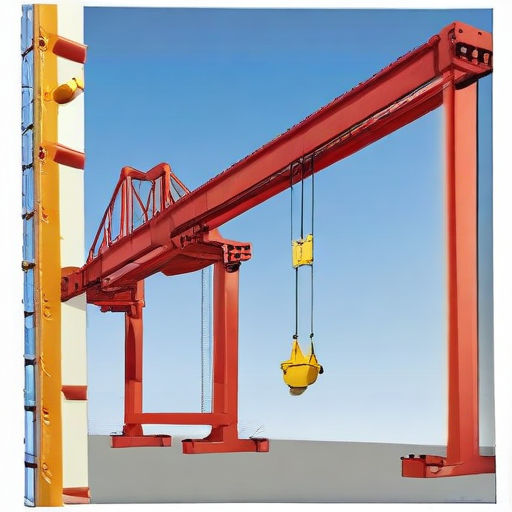
List Product features of “container crane”
A container crane, also known as a gantry crane, is integral to port and terminal operations, facilitating the efficient transfer of containers between ships and the shore. Here are the key features:
1. High Load Capacity: Container cranes can lift heavy containers, typically ranging from 40 to 100 tons, supporting diverse cargo types.
2. Wide Span and Outreach: They often feature significant span widths and outreach capabilities to handle large vessels, including Panamax, Post-Panamax, and even Ultra Large Container Ships (ULCS).
3. Height: Designed with towering heights to accommodate containers stacked high on ships, maximizing cargo handling efficiency.
4. Precision Control Systems: Equipped with advanced control systems for precise handling, reducing the risk of damage to containers and ensuring accurate placement.
5. Automation: Many modern cranes incorporate automated and semi-automated technologies, enhancing operational efficiency and reducing human labor requirements.
6. Energy Efficiency: Features such as regenerative drives and advanced power management systems help minimize energy consumption and environmental impact.
7. Safety Mechanisms: Includes various safety features like anti-collision systems, overload protection, and emergency stop functions to ensure safe operations.
8. Durable Construction: Built with high-grade materials to withstand harsh maritime environments, including salty air and heavy winds.
9. Versatility: Capable of handling different container sizes and types, including standard 20-foot, 40-foot, and even specialized containers.
10. Fast Lifting and Travel Speeds: High operational speeds for lifting, lowering, trolleying, and gantry traveling, which enhances throughput and reduces downtime.
11. Remote Monitoring and Diagnostics: Equipped with systems that provide real-time data and diagnostics, allowing for predictive maintenance and prompt issue resolution.
12. Environmental Adaptability: Designed to operate under various weather conditions, ensuring consistent performance year-round.
These features make container cranes indispensable for modern port operations, enabling the swift, safe, and efficient handling of large volumes of cargo.
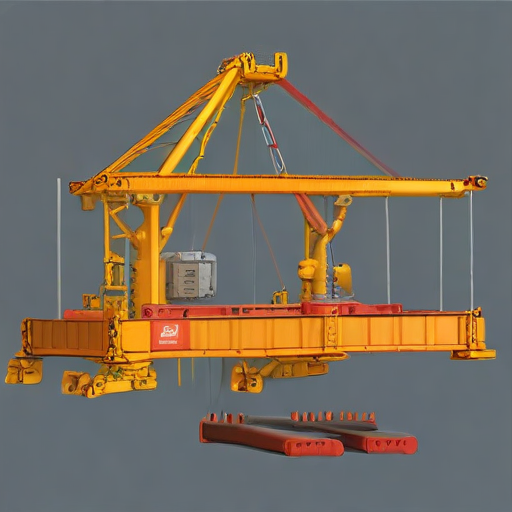
List Various Types of “container crane”
Container cranes are essential for the handling and movement of shipping containers in ports and terminals. Here are the various types of container cranes:
1. Ship-to-Shore (STS) Gantry Cranes:
– Panamax: Designed to handle ships that fit through the Panama Canal, usually limited by a width of about 32 meters.
– Post-Panamax: Developed to serve vessels larger than Panamax but smaller than New Panamax, typically up to 18 containers wide.
– New Panamax (Neo-Panamax): Built for ships that fit the expanded Panama Canal, often capable of handling vessels up to 22 containers wide.
– Ultra Large Container Vessel (ULCV): Engineered for some of the world’s largest ships, these cranes can manage vessels exceeding 22 containers wide.
2. Rail-Mounted Gantry Cranes (RMG):
– Used primarily in rail yards and port terminals, these cranes move on fixed tracks and are ideal for stacking and moving containers in organized stacks.
3. Rubber-Tyred Gantry Cranes (RTG):
– Unlike RMG cranes, RTG cranes are mobile and move on rubber tires, offering flexibility in arranging container stacks in yards.
4. Mobile Harbor Cranes (MHC):
– These versatile cranes can move across the port and are not fixed in location, making them useful for smaller ports or for additional loading/unloading capabilities.
5. Straddle Carriers:
– These are mobile units that straddle containers to move them around the terminal, and can stack containers up to 4 high.
6. Automated Stacking Cranes (ASC):
– Part of automated container terminals, ASCs function without human intervention, enhancing efficiency in high-traffic ports.
Each type of crane serves a specific purpose based on the requirements of the port, the size of the vessels serviced, and the logistics of container stacking and movement. By choosing the right type of container crane, ports can optimize their operations and improve productivity.
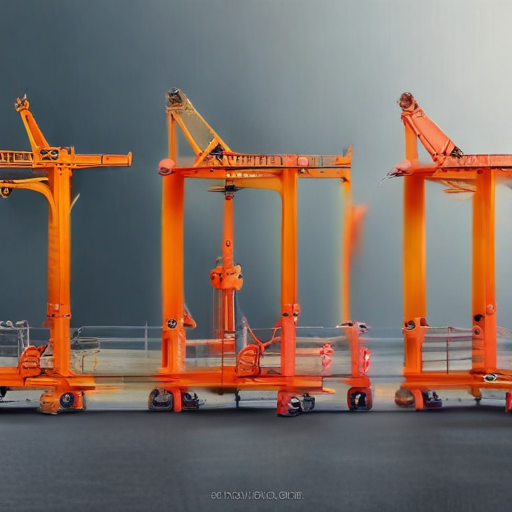
List Application of “container crane”
Container cranes, also known as gantry cranes or portainers, play a crucial role in various applications within the shipping, logistics, and port operations industries. Here are some of their primary applications:
1. Loading and Unloading Cargo Ships:
– Container cranes are pivotal in efficiently transferring containers between ships and the dock. This process is essential for international trade, enabling seamless import and export of goods.
2. Port and Terminal Operations:
– In ports and logistics terminals, these cranes help manage container storage yards by stacking, organizing, and moving containers to and from storage areas, ensuring optimal space utilization.
3. Intermodal Operations:
– Container cranes facilitate the transfer of containers between different modes of transportation, such as ships, trains, and trucks, thereby enhancing the efficiency of multimodal transport systems.
4. Repair and Maintenance:
– They are also used for handling heavy machinery, parts, and equipment that are needed for the maintenance and repair of ships and port infrastructure.
5. Construction Sites Near Ports:
– Container cranes assist in the construction and heavy lifting activities associated with building port facilities, warehouses, and other infrastructure near port areas.
6. Specialized Cargo Handling:
– In addition to standard containers, these cranes can be adapted to handle oversized or specialized cargo, which requires precise lifting and positioning.
7. Supporting Offshore Projects:
– For offshore construction and oil drilling projects, container cranes are used to load and unload equipment and materials from supply vessels to drilling rigs or platforms.
8. Emergency Operations:
– During emergency situations such as natural disasters, container cranes can be used to quickly mobilize and distribute relief supplies, equipment, and materials.
By enabling efficient and large-scale handling of containers, container cranes are integral to maintaining the flow of goods, supporting global trade, and ensuring effective port and terminal operations.
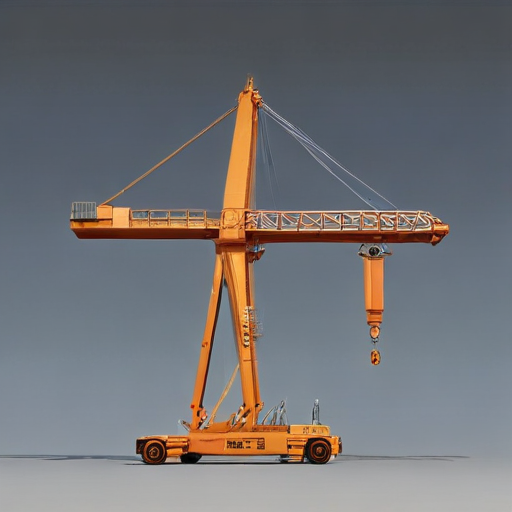
List Buyer Types of “container crane”
Container cranes are critical pieces of equipment used in the loading and unloading of container ships at ports and shipping terminals. They are essential for the efficient handling of cargo and play a crucial role in global trade. The primary buyer types of container cranes include:
1. Port Authorities: These entities manage and operate public ports and docks. They invest in container cranes to ensure smooth and efficient cargo handling, aiming to increase the throughput and logistical capabilities of the port.
2. Shipping Companies: Large shipping firms that manage their own terminal operations may purchase container cranes to facilitate quick and efficient loading and unloading operations, thereby improving turnaround times for their vessels.
3. Terminal Operators: Independent terminal management companies that contract with ports to handle cargo operations often buy container cranes to enhance their service offerings and attract business from shipping companies.
4. Logistics Companies: Some large logistics firms that operate intermodal freight terminals or dry ports invest in container cranes for swift cargo movement and transhipment.
5. Government Agencies: National or regional governments may purchase container cranes for use in defense logistics, customs operations, or infrastructure development projects aimed at boosting trade.
6. Private Investors: Private equity firms and investment groups sometimes acquire container cranes as part of investments in port infrastructure to lease them to terminal and port operators.
7. Industrial Corporations: Companies involved in heavy industries, such as mining or oil and gas, may require container cranes at their industrial ports for the shipment of heavy equipment and materials.
8. Construction Firms: Some large construction companies that undertake significant infrastructure projects, particularly those involving the building of new ports, might purchase container cranes as part of the project’s necessary equipment.
These diverse buyer types reflect the vital role container cranes play in various sectors, emphasizing their importance in facilitating global trade and logistics.
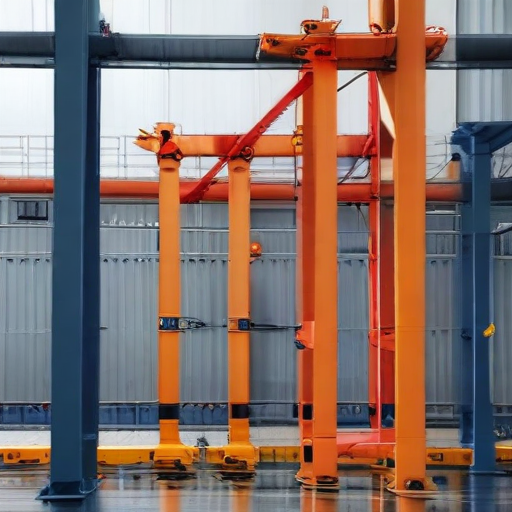
List “container crane” Project Types for Different Industries
Container cranes, indispensable in the shipping and logistics sectors, serve various industries by facilitating the efficient transfer of goods. Here’s a brief overview of different container crane project types aligned with various industries:
1. Maritime Port Operations:
– Ship-to-Shore (STS) Cranes: Essential for transferring containers between ships and dockside storage. Common in major seaports.
– Rubber-Tired Gantry (RTG) Cranes: Used within container yards for stacking containers, offering flexibility and mobility.
– Rail-Mounted Gantry (RMG) Cranes: Employed for stacking and moving containers in rail yards and seaports, delivering precise and efficient container management.
2. Railway Freight Terminals:
– Intermodal Cranes: Facilitate container transfers between rail and road transport, streamlining multimodal logistics.
– Reach Stackers: Provide versatile handling and positioning of containers on rail tracks, improving operational efficiency.
3. Manufacturing and Industrial Warehousing:
– Overhead Bridge Cranes: Used in warehouses for handling heavy manufacturing components, often deployed in assembly lines.
– Gantry Cranes: Enable robust management of large, heavy parts in industrial settings, ensuring safe and efficient loading and unloading.
4. Logistics and Distribution Centers:
– Automated Stacking Cranes (ASC): Enhance productivity in automated storage and retrieval systems, supporting large-scale distribution operations.
– Forklift-Mounted Container Handling Systems: Suited for smaller logistics hubs, allowing flexible container handling in confined spaces.
5. Inland Ports and Dry Ports:
– Straddle Carriers: Enable efficient container stacking and transport within inland port facilities, boosting intermodal connectivity.
– Side Loader Cranes: Provide versatile container movement in dry ports, facilitating seamless integration into the supply chain.
6. Agriculture and Commodity Export Terminals:
– Bulk Handling Cranes: Specially designed for handling agricultural products like grains, ensuring swift loading and unloading.
– Mobile Harbor Cranes: Adaptable for various types of bulk cargo, supporting agricultural export processes efficiently.
Each crane type is meticulously designed to meet the specific requirements of its corresponding industry, thereby optimizing operational efficiency and reducing downtime.
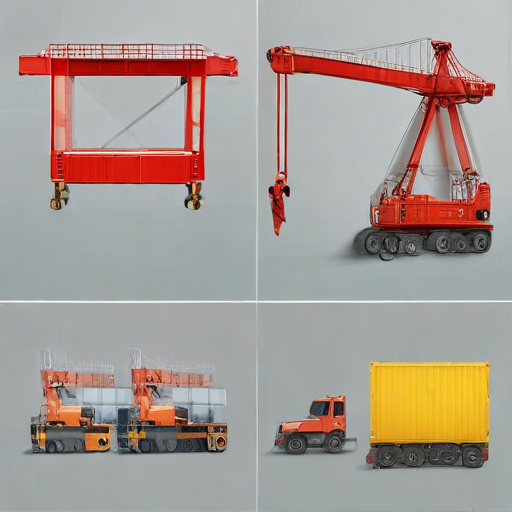
container crane Accessories Upgrades and Custom Manufacturing Options
Container cranes are vital for efficient port operations, and various accessories, upgrades, and custom manufacturing options can significantly enhance their performance, safety, and versatility.
Accessories:
1. Spreaders: Tailored to handle different container sizes and weights, spreaders can have adjustable widths or be equipped with automatic twist locks.
2. Anti-Sway Systems: These systems minimize the swaying motion of containers during lifting and lowering, increasing precision and safety.
3. Load Monitoring Systems: Real-time weight and load distribution data ensure safe lifting practices and prevent overloading.
4. Cameras and Sensors: High-resolution cameras and advanced sensors improve operational visibility and accuracy, particularly in low visibility conditions.
5. Emergency Stop Systems: Rapid response mechanisms to halt operations and mitigate accidents in critical situations.
Upgrades:
1. Automation and Remote Operation: Implementing remote control features or full automation can optimize manpower, reduce human error, and increase operational efficiency.
2. Energy Efficiency: Switching to energy-efficient motors or regenerative power systems can lower operational costs and carbon footprint.
3. Structural Reinforcement: Enhancing the crane’s structural components to handle increased loads or meet newer regulatory standards.
4. Software Upgrades: Advanced operational software can offer better diagnostics, maintenance scheduling, and overall system management.
Custom Manufacturing Options:
1. Tailored Designs: Custom cranes can be designed to meet specific operational requirements, such as unique loading/unloading procedures or specialized handling needs.
2. Material Choice: Selecting higher-grade materials for construction to improve durability and reduce maintenance.
3. Capacity Modifications: Customizing lifting capacities to match specific operational demands.
By integrating these accessories, upgrades, and custom manufacturing options, container cranes can achieve better performance, enhanced safety, and greater adaptability, thereby supporting more efficient and reliable port operations.
List Quality Control and The Manufacturing Process of “container crane”
Quality Control in Container Crane Manufacturing
Quality control (QC) in container crane manufacturing ensures the equipment meets stringent standards for safety, reliability, and performance. QC involves:
1. Material Inspection: Verifying the quality of raw materials like steel and electronic components through certifications and physical inspections.
2. Component Testing: Inspecting and testing sub-assemblies—such as hoists, trolleys, and electrical systems—against specifications before integration.
3. Dimensional Analysis: Using precision tools to verify critical dimensions and tolerances, ensuring components fit correctly.
4. Non-Destructive Testing (NDT): Employing techniques like ultrasonic testing and radiography to detect internal flaws in welds and materials.
5. Load Testing: Simulating operational loads to verify structural integrity and mechanical performance.
6. Functional Testing: Running the assembled crane to ensure all mechanical, hydraulic, and electronic systems operate correctly.
7. Final Inspection and Certification: Conducting a comprehensive review and certifying compliance with regulatory and industry standards.
Manufacturing Process of Container Crane
1. Design and Engineering:
– Conceptualization: Drafting initial designs focusing on load capacity, reach, and operational efficiency.
– Detailed Engineering: Creating detailed technical drawings and specifications.
2. Material Sourcing:
– Procuring high-strength steel, motors, cables, and electronic components from trusted suppliers.
3. Fabrication:
– Cutting and Shaping: Using CNC machines and laser cutters to shape steel components.
– Welding: Assembling parts with precision welding techniques to ensure strength and durability.
4. Assembly:
– Pre-Assembly: Initial assembly of sub-components like boom, gantry, and trolley.
– Integration: Bringing together mechanical and electrical systems, followed by installation of control systems.
5. Installation:
– Transporting the crane parts to the port site.
– Erecting the crane using heavy lifting equipment and securing it to the foundation.
6. Testing:
– Performing rigorous on-site testing including load tests, operational trials, and safety checks.
7. Commissioning:
– Final adjustments and operator training.
– Handing over the crane to the client after successful testing and certification.
Effective QC and a robust manufacturing process ensure the production of reliable, efficient, and safe container cranes.
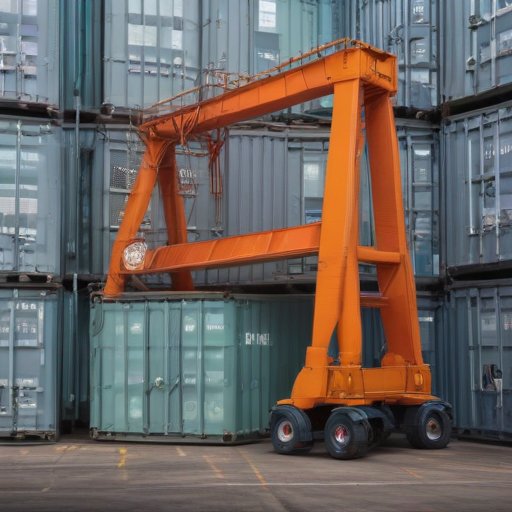
How to use “container crane”
A container crane, also known as a gantry crane or portainer, is used to load and unload shipping containers from container ships at ports. Here’s a step-by-step guide on how to use a container crane effectively:
1. Preliminary Checks:
– Conduct a thorough inspection of the crane. Check for mechanical issues, hydraulic fluid levels, and ensure all safety systems are operational.
– Confirm the crane’s load capacity for the specific operation to avoid overloading.
2. Positioning:
– Position the crane so that the spreader (the device used to lift containers) is directly above the container to be moved.
– Use the crane’s control system to align the spreader with the container’s corners.
3. Engaging the Container:
– Lower the spreader onto the container. Ensure it locks securely onto the container’s corner castings.
– Double-check that the spreader is safely fastened before lifting. Most systems will provide an indication when locked.
4. Lifting:
– Slowly lift the container. Monitor the load to ensure it’s balanced and secure.
– Raise the container to a safe height above any obstacles.
5. Moving:
– Move the crane along its tracks to transport the container to the desired location, such as a truck, rail car, or storage area.
– Ensure smooth and controlled movements to avoid swaying.
6. Lowering and Releasing:
– Position the container over its destination.
– Gradually lower the container, ensuring it aligns correctly with the target.
– Once in place, unlock the spreader from the container.
7. Post-Operation:
– Perform a post-use inspection to spot any potential wear or damage for timely maintenance.
– Log the operation details as required by port protocols.
Safety Note: Always follow the manufacturer’s instructions and port regulations. Operators should be trained and certified to use the crane.
Using a container crane demands precision and adherence to safety protocols to ensure efficient and secure handling of cargo.
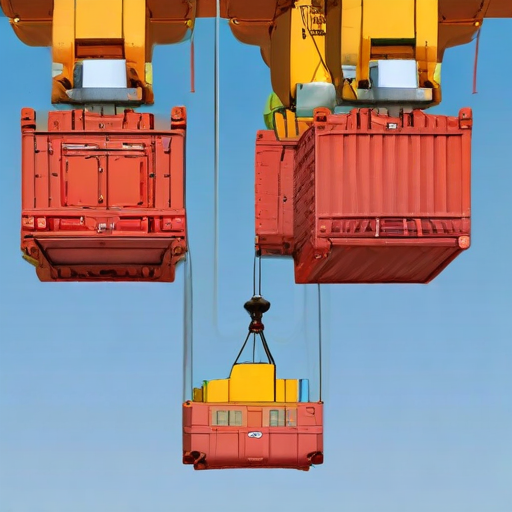
“container crane” Comparative Analysis
Container cranes, also known as container handling gantry cranes, play a pivotal role in modern port operations by facilitating the loading and unloading of container ships. Here, we’ll compare Ship-to-Shore (STS) cranes, Rubber-Tired Gantry (RTG) cranes, and Rail-Mounted Gantry (RMG) cranes based on their operational environment, efficiency, and cost.
Operational Environment:
– STS Cranes: Predominantly used on docks for ship-to-shore loading and unloading. They are massive and fixed in place, spanning over the container ships and reaching far into the ship’s hold.
– RTG Cranes: Highly mobile with the ability to move containers within the yard using rubber tires. They offer flexibility with their ability to work in various yard areas.
– RMG Cranes: Fixed on tracks and primarily used within rail yards or container storage areas in ports for stacking and moving containers efficiently on dedicated rail paths.
Efficiency:
– STS Cranes: High efficiency in a narrow scope; these cranes are designed for rapid and precise movement of containers between ship and dock. Their scalability and reach enable them to handle massive container ships.
– RTG Cranes: Offer mid-range efficiency with the benefit of mobility, allowing them to organize containers throughout the yard. However, the need to move over rough terrain can slow operations.
– RMG Cranes: Extremely efficient for container stacking and rail operations. Their fixed rail system ensures fast and smooth operations, although they lack the RTG’s flexibility.
Cost:
– STS Cranes: High initial and maintenance costs due to their size, complex technology, and specific operational niche. However, they are indispensable for high-volume port operations.
– RTG Cranes: Moderate cost with relative mobility. They represent a balanced investment, providing operational flexibility without the prohibitive costs of STS cranes.
– RMG Cranes: High initial cost similar to STS cranes but lower long-term maintenance expenses due to their simpler movement mechanics. They are cost-effective for specialized rail port operations.
In conclusion, the choice among STS, RTG, and RMG cranes depends on specific port requirements. STS cranes are best for direct ship operations, RTG cranes for versatile yard movements, and RMG cranes for efficient rail and container stacking activities.
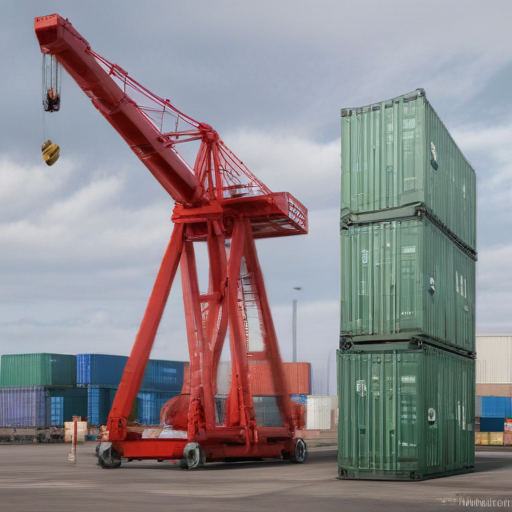
“container crane” Warranty and Support
Warranty and Support for Container Cranes
When investing in a container crane, ensuring a robust warranty and support system is vital to maximize efficiency and longevity. Typically, manufacturers offer a standard warranty period ranging from one to two years, covering defects in materials and workmanship. Some companies provide options to extend the warranty for an additional fee, offering peace of mind and safeguarding against unforeseen issues.
Warranty Inclusions
– Parts and Labor: Most warranties include coverage for replacement parts and labor, ensuring that if a defect arises, it can be rectified without additional costs.
– Technical Support: Manufacturers often provide around-the-clock technical support to diagnose and solve issues remotely, minimizing downtime.
– Preventive Maintenance: Some warranties incorporate scheduled maintenance visits to check and service the crane, contributing to its optimal performance and reducing the risk of future breakdowns.
Support Services
– On-Site Repairs: In case of a malfunction, swift on-site repair services by certified technicians can be critical. This ensures minimal operational disruption.
– Training Programs: Comprehensive training for operators and maintenance personnel is usually provided to ensure proper use and upkeep of the equipment.
– Spare Parts Availability: A guarantee of readily available spare parts can significantly enhance operational efficiency. Some manufacturers offer dedicated inventory support to prevent delays in repairs.
Extended Support Options
– Service Contracts: Post-warranty service contracts can be availed to continue benefitting from regular maintenance, technical support, and priority repair services.
– Upgrades and Retrofitting: Manufacturers may offer upgrade packages to keep the crane technology up-to-date, enhancing productivity and safety.
Choosing a container crane with a comprehensive warranty and reliable support services ensures that your investment remains protected, minimizing downtime and maintaining seamless operations. Always review the warranty terms carefully and consider additional support options to tailor the coverage to your specific needs.
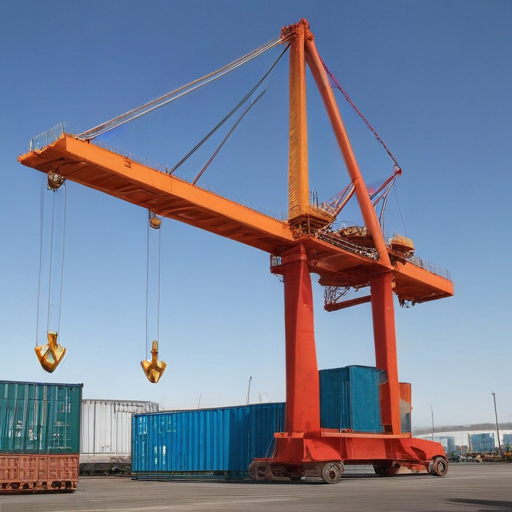
List “container crane” FAQ
Container Crane FAQ
1. What is a container crane?
A container crane, also known as a portainer, is specialized equipment used at ports and terminals for loading and unloading intermodal containers from ships to docks or vice versa.
2. What are the types of container cranes?
– Ship-to-Shore (STS) Cranes: Used to load and unload containers from vessels.
– Rubber-Tired Gantry (RTG) Cranes: Move containers within the port.
– Rail-Mounted Gantry (RMG) Cranes: Operate on fixed tracks for container stacking and handling.
3. How are container cranes powered?
Container cranes typically use electrical power, either from shore power connections or onboard generators. Modern cranes are increasingly electrically driven for better efficiency and reduced emissions.
4. What is the lifting capacity of a container crane?
A typical STS crane can lift between 40 to 100 tons, depending on the design and model, enabling it to handle 20-foot, 40-foot, and occasionally larger containers.
5. What is the outreach of a container crane?
The outreach is the horizontal distance from the crane’s base to the furthest point of its arm, typically ranging from 40 to 65 meters, allowing it to reach containers stacked across wide vessels.
6. How are container cranes operated?
They can be operated manually by an operator stationed in a cab atop the crane or remotely, using advanced computerized systems for higher precision and safety.
7. What safety features do container cranes have?
Features include anti-collision systems, load sensors, fail-safe brakes, emergency stop controls, and surveillance cameras to ensure safe and efficient operation.
8. What maintenance do container cranes require?
Regular maintenance includes inspection of structural components, lubrication of moving parts, checking electrical systems, and ensuring operational software is updated.
9. How long does it take to unload a container ship using cranes?
Depending on the size of the vessel and the efficiency of the port’s operations, it can take anywhere from a few hours to multiple days to unload a container ship.
10. Why are container cranes important?
They are crucial for efficient port operations, enabling the rapid loading and unloading of container ships, hence facilitating global trade by reducing turnaround times.
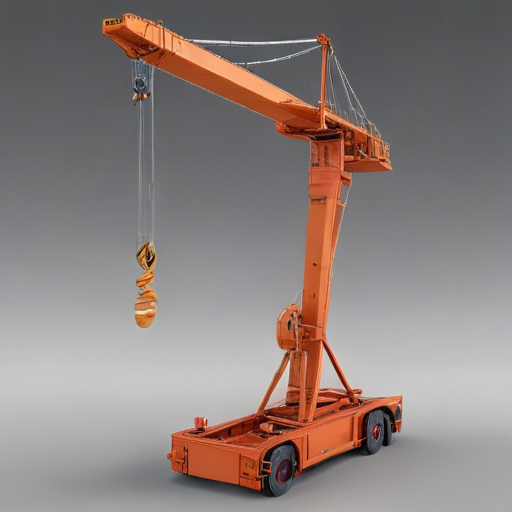
Top 10 FAQ with answer about container crane for Buyer Sourcing from China
Sure, here are the top 10 frequently asked questions (FAQ) with answers about sourcing container cranes from China:
1. What types of container cranes can I source from China?
– Answer: China manufactures various types of container cranes, including Ship-to-Shore (STS) cranes, Rail-Mounted Gantry (RMG) cranes, Rubber-Tyred Gantry (RTG) cranes, and Mobile Harbor Cranes. Assess your specific port requirements to choose the right type.
2. What are the leading container crane manufacturers in China?
– Answer: Key manufacturers include ZPMC, Sany, and Shanghai Strong, known for their quality and global market presence. Research each company’s offerings and financial stability.
3. How is the quality of Chinese container cranes?
– Answer: Chinese manufacturers have significantly improved their quality control protocols, with many complying with international standards. Always check for ISO certifications and ask for third-party inspection reports.
4. What is the average lead time for delivery?
– Answer: The lead time can vary, but typically expect a range of 6 to 12 months, depending on the complexity and customization requirements of the crane.
5. Is it cost-effective to source cranes from China?
– Answer: Generally, Chinese container cranes are competitively priced due to lower manufacturing costs. However, consider shipping, import duties, and installation costs in your total cost assessment.
6. What should I consider regarding after-sales service and maintenance?
– Answer: Confirm if the manufacturer provides local service centers or has agreements with local partners. Ensure spare parts availability and request detailed warranty terms.
7. Are there financing options available?
– Answer: Some Chinese manufacturers offer financing options. Additionally, explore credit lines or leasing arrangements through international banks or export-import banks.
8. How do I inspect the crane before shipment?
– Answer: Arrange for either a factory acceptance test (FAT) or hire a third-party inspection service to verify specifications and quality before shipment.
9. What are the shipping logistics involved?
– Answer: Container cranes are shipped in parts due to their massive size. Confirm packing standards, shipping terms (Incoterms), and plan for assembly on-site.
10. What documentation is required for importing container cranes?
– Answer: Essential documents include a proforma invoice, purchase order, bill of lading, certificate of origin, and any relevant compliance certification. Consult with a customs broker to ensure all documentation is correctly handled.

